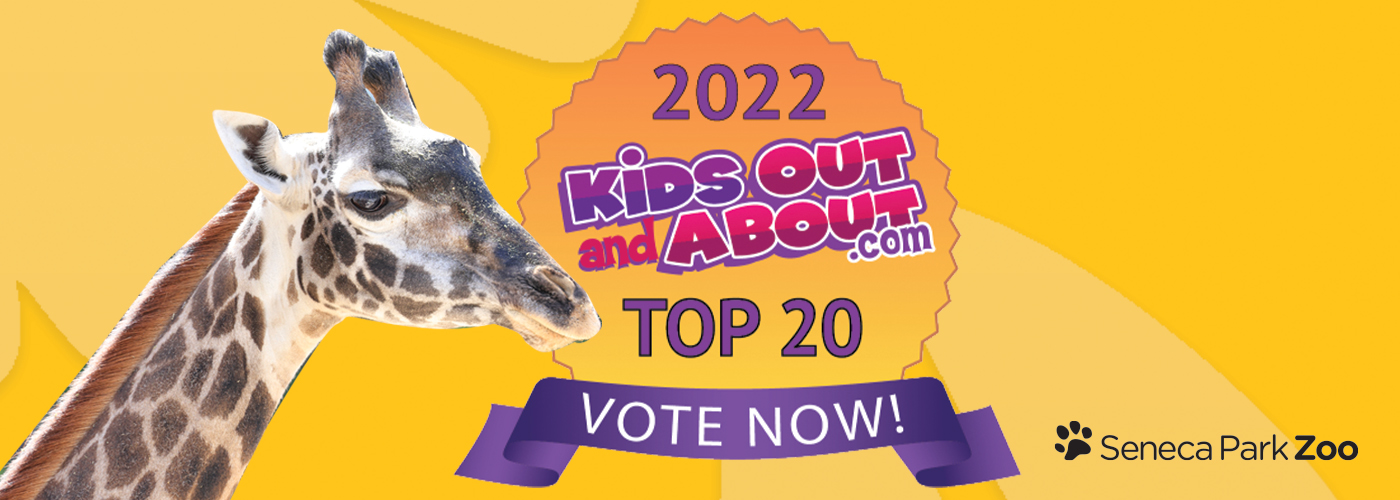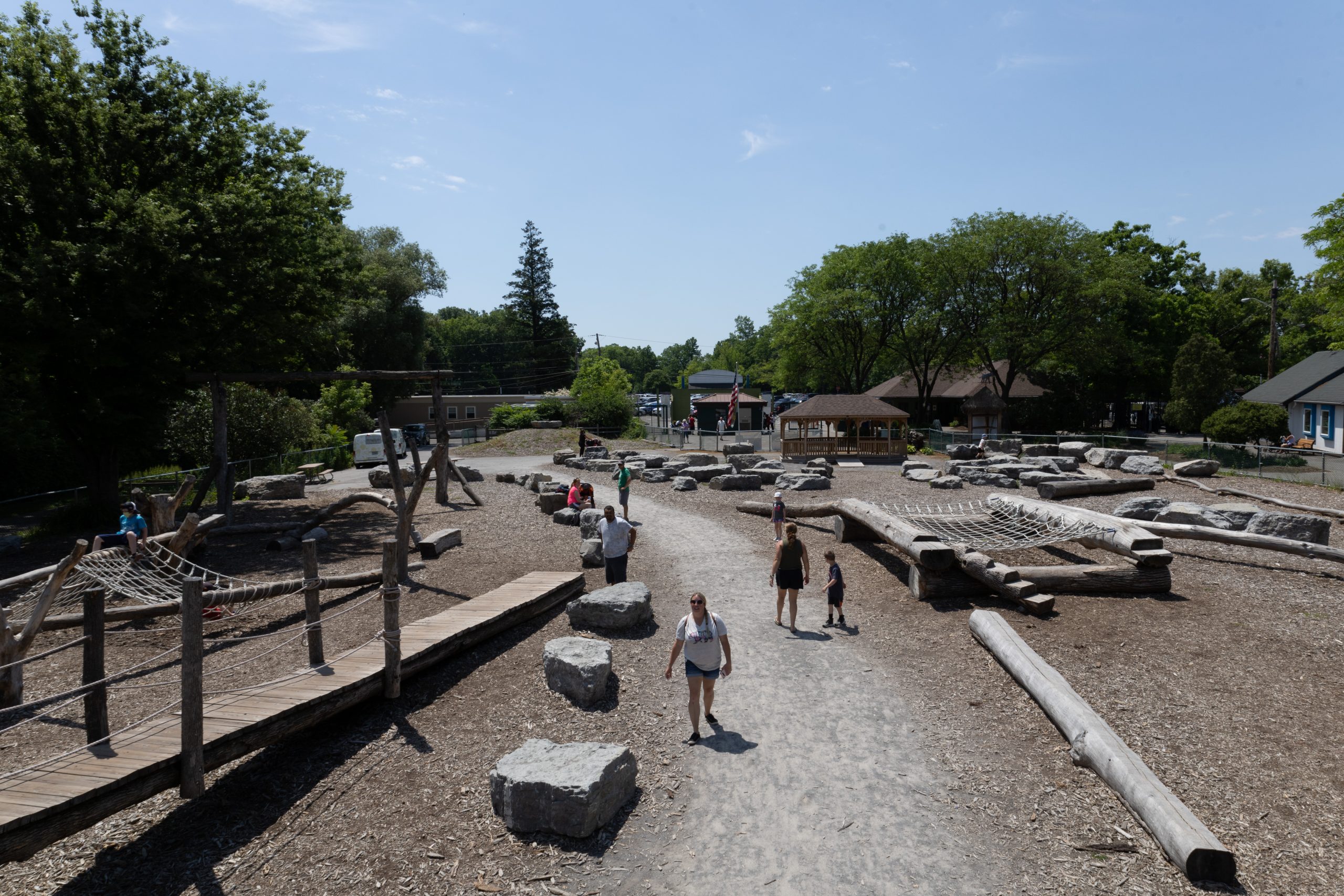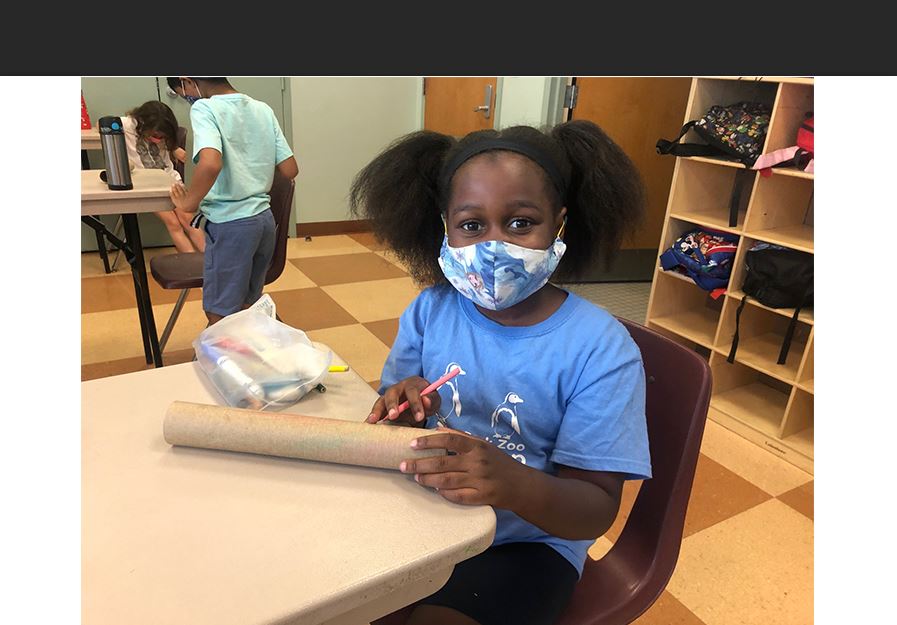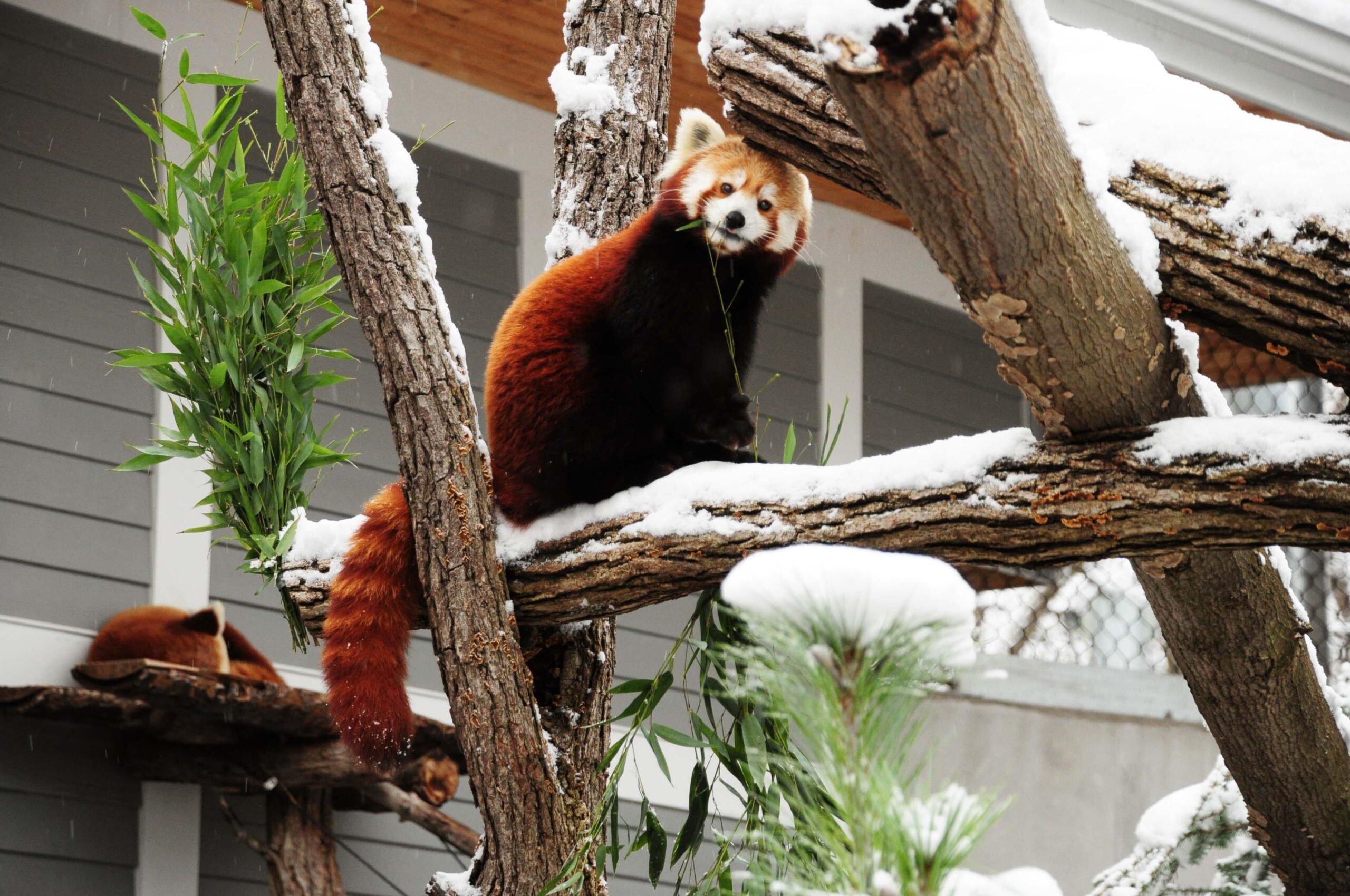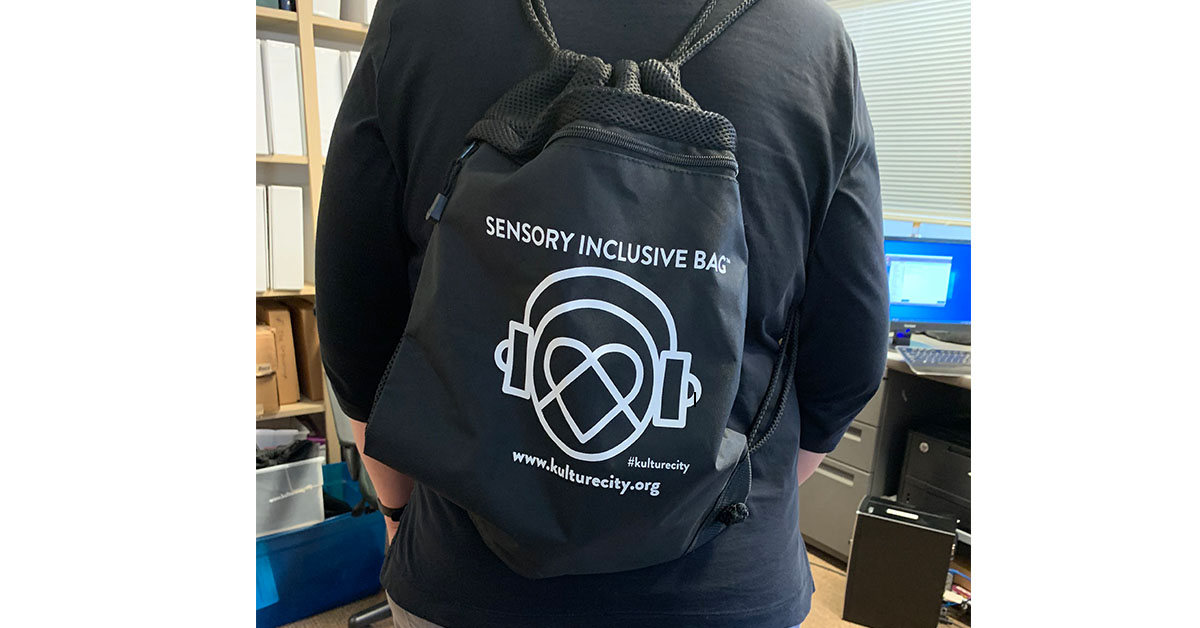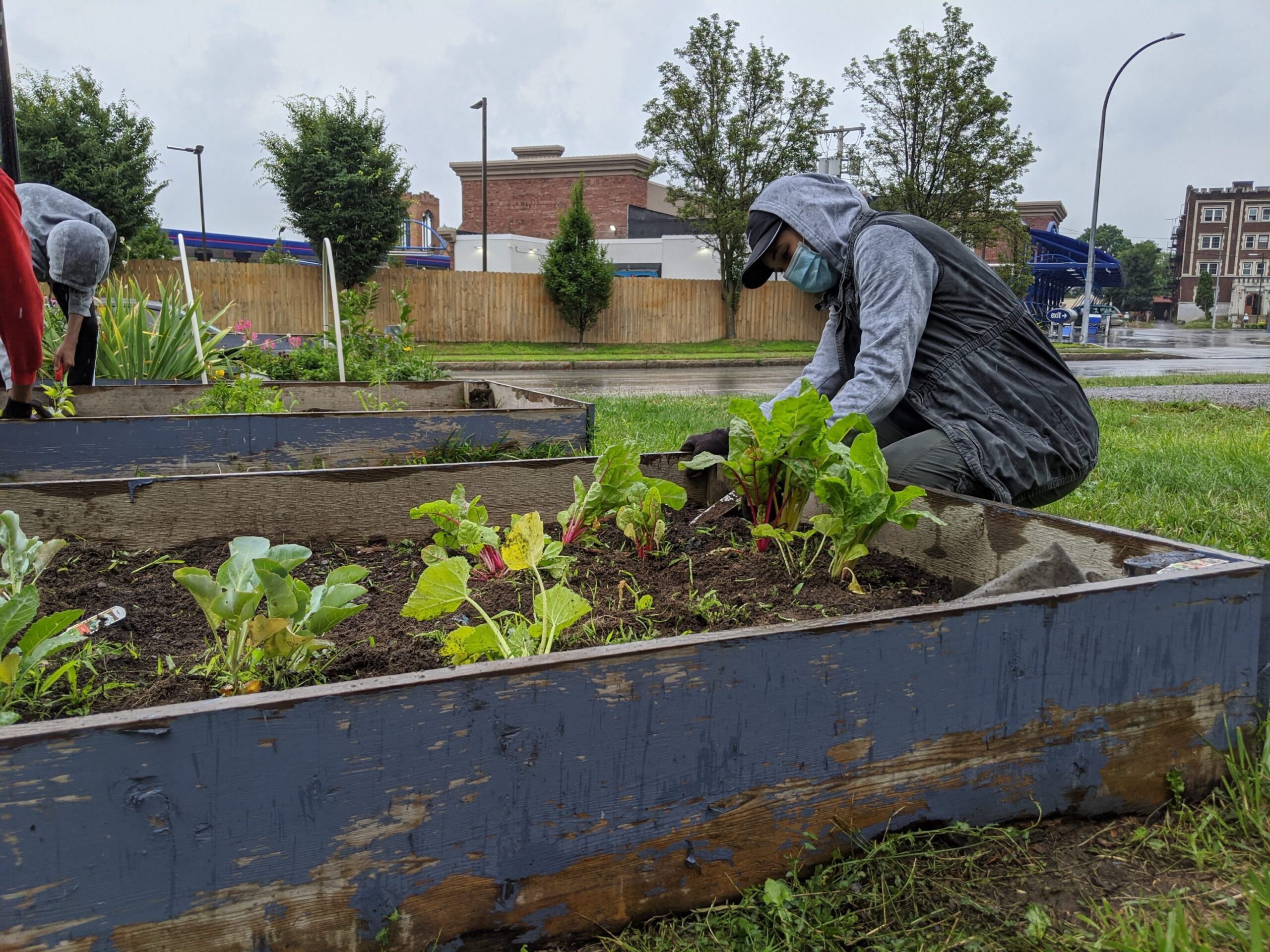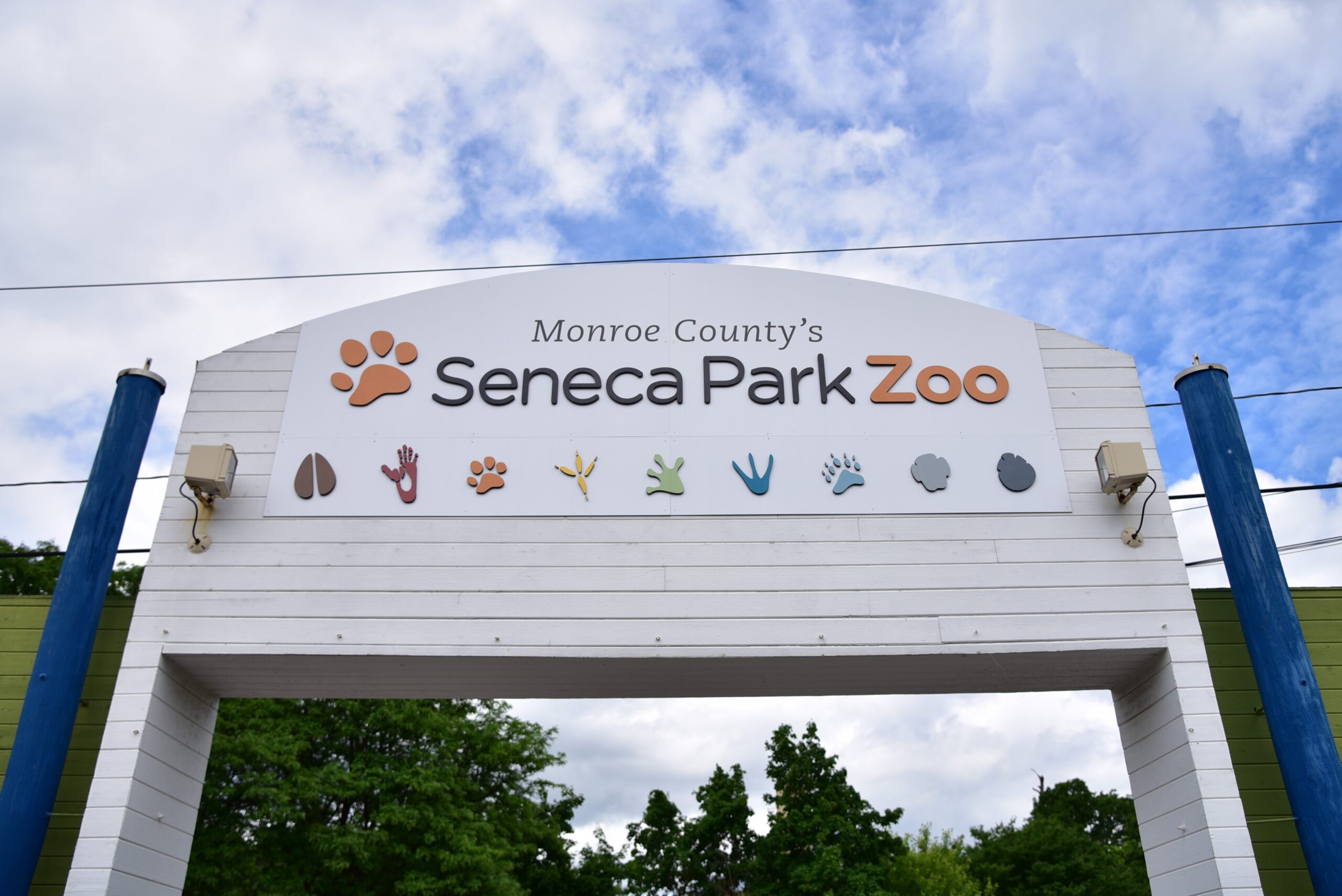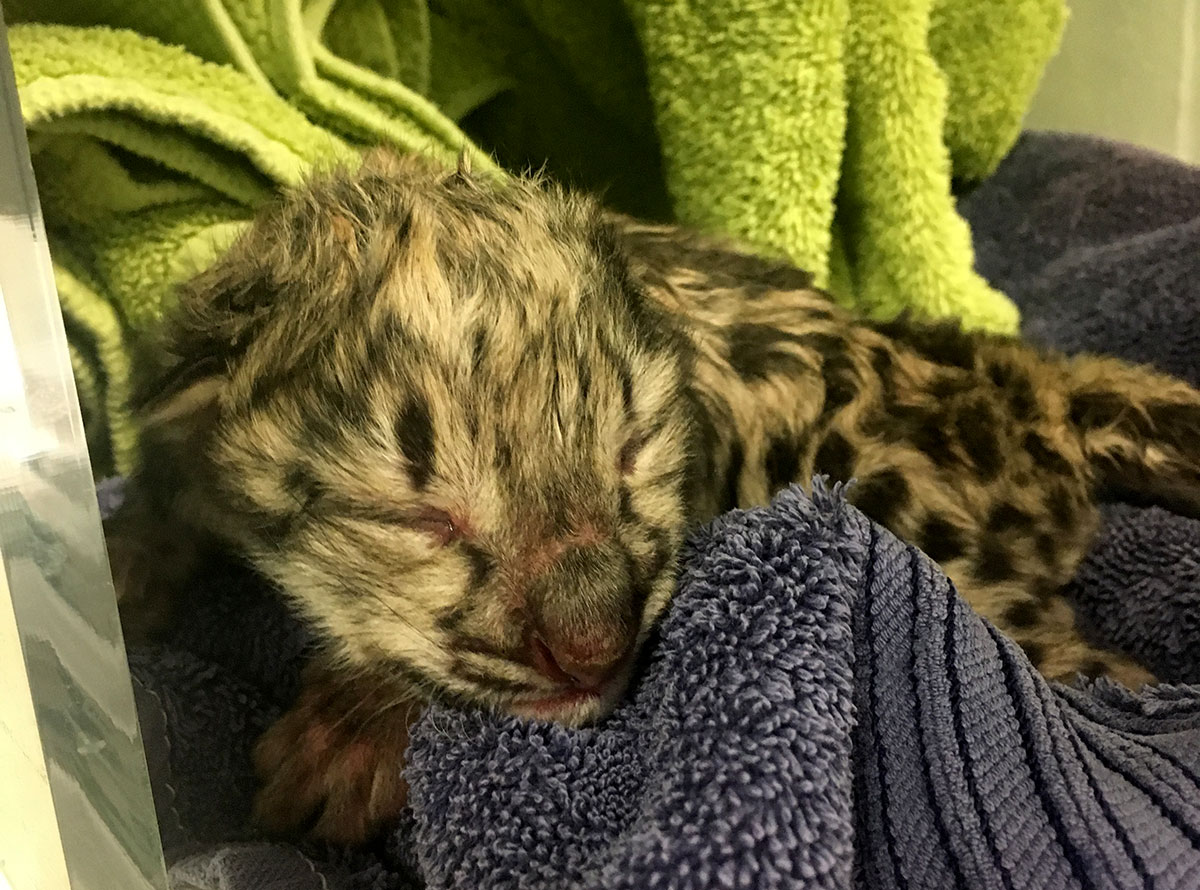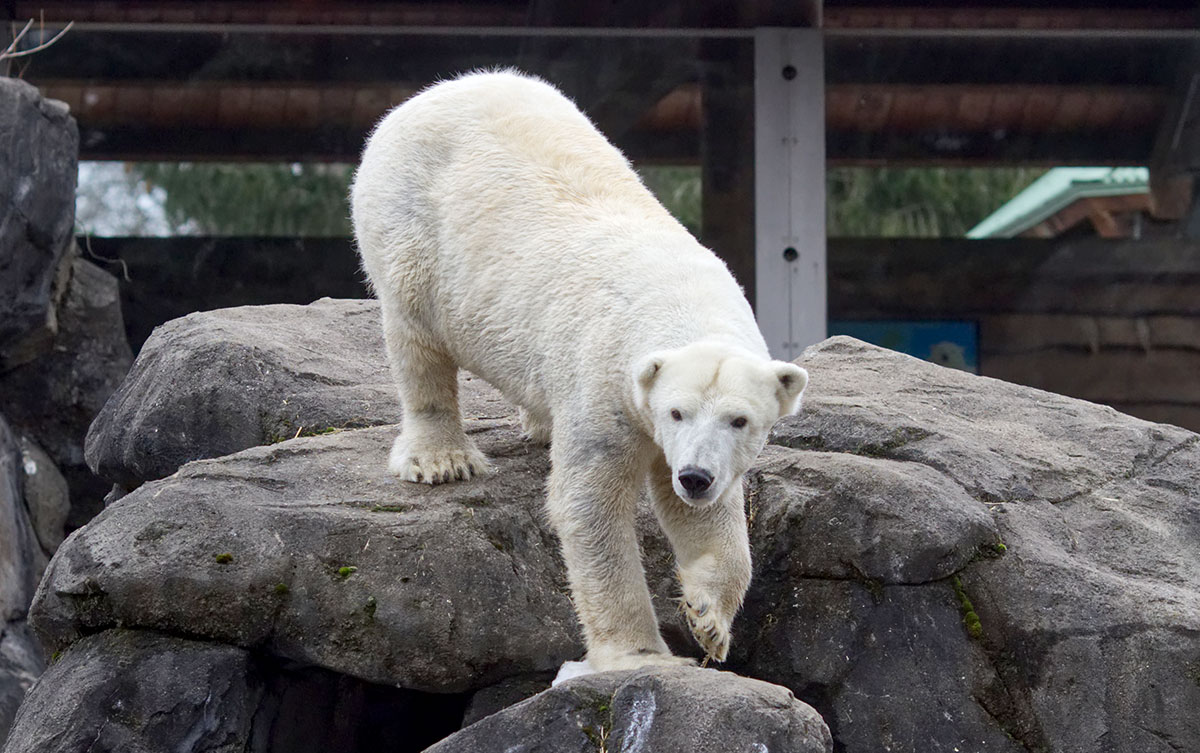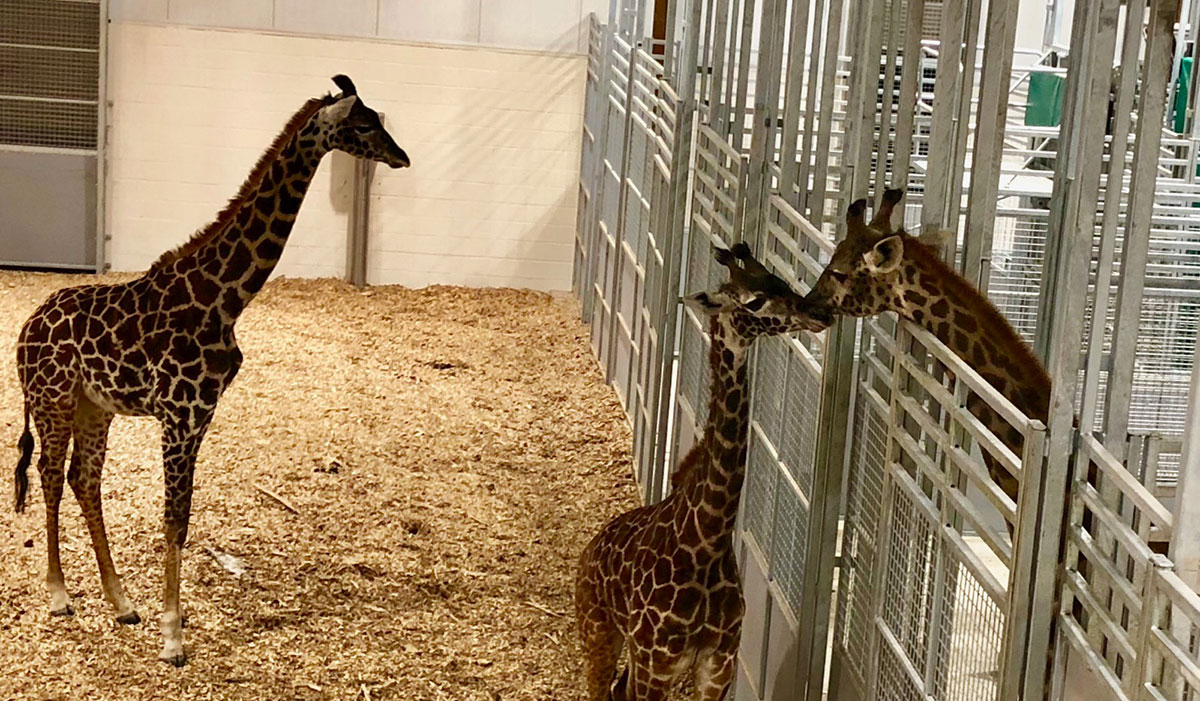January 2, 2019
Question: How do you transport a giraffe cross-country?
Answer: Very carefully!
In late October, a team of four from Seneca Park Zoo traveled to Santa Barbara Zoo to help bring Parker, a two-year old male Masai giraffe to his new home. I was very proud to join my colleagues, Assistant Zoo Director Dr. Louis DiVincenti, Assistant Director of Parks Lisa Nicolay, and Assistant Curator for Hoofstock Lindsay Brinda, on this excellent adventure.We flew to Los Angeles, rented an SUV and headed up the coast to Santa Barbara. The zoo has a beautiful view of the Pacific Ocean and the grounds were outstanding. Good thing Parker didn’t know that he would soon be headed for the snow-belt, right? He might not want to go with us, right? Well, it was almost as if someone had tipped him off.
On the morning of October 25th, our team met up at Santa Barbara Zoo with a crew of three from International Animal Exchange, hired by Monroe County to transport the giraffe in a specialized trailer with a low floor and a tall roof, hauled by a pick-up truck. With the trailer in position at the giraffe habitat, the Santa Barbara Zoo’s Hoofstock Team took over. They tried their best to encourage and entice Parker to get on the trailer, but he just wasn’t interested. After waiting him out all morning and afternoon, we called it a day around 4 p.m. We decided it would be best to try again in the morning.Most of the next day, October 26th, went about as well as the day before! Over and over, Parker approached the trailer, peered in with the curious stare of a giraffe, but didn’t take the next step of getting on. After a second day of playing the “waiting game” all day, Parker finally decided to step onto the trailer! He was calm and showed no signs of stress as the staff who cared for him since birth said their goodbyes. At 5 p.m., we were finally on the road and headed south toward Los Angeles on US Highway 101. It was a slow go at first with combined rush-hour and weekend traffic congestion, but we made it to Interstate Route 10 and were “East Bound and Down,” just like the song.
Along the way to Rochester, our two-vehicle convoy pulled off the Interstate every few hours at gas stations and truck stops to check on Parker, replenish his food and water, and ensure he was remaining calm (which he did throughout the trip). These stops also provided us humans on the journey an opportunity to fuel-up the vehicles, get food, visit the restroom, and change drivers.At about 13 feet in height, Parker was able to stand straight in the trailer. He was comfortable enough that he laid down on occasion along the way, which was an excellent sign that our passenger was doing just fine.
We drove straight-through, traveling from California through Arizona, New Mexico, Texas, Oklahoma, Missouri, Illinois, Indiana, Ohio, and Pennsylvania to New York. It was a journey that none of us would soon forget, with many beautiful landscapes and very interesting people along the way.
In the early morning hours of October 29th, after 58 hours on the road over the course of four days, and a last minute detour to avoid the notoriously low clearance railroad bridge on St. Paul, we pulled into Seneca Park. We made it and Parker had arrived at the new Animals of the Savannah expansion at Seneca Park Zoo! He was greeted by Animal Care staff and, of course, our two one-year old female giraffes Kipenzi and Iggy. Parker has quickly acclimated to his new habitat, companions, and caretakers.
Be sure to visit Parker, along with Kipenzi, Iggy and our plains zebras, Lydia, Liberty, and Dottie, at the new Animals of the Savanna expansion. The Zoo is open year-round!
– Larry Staub, Zoo Director

